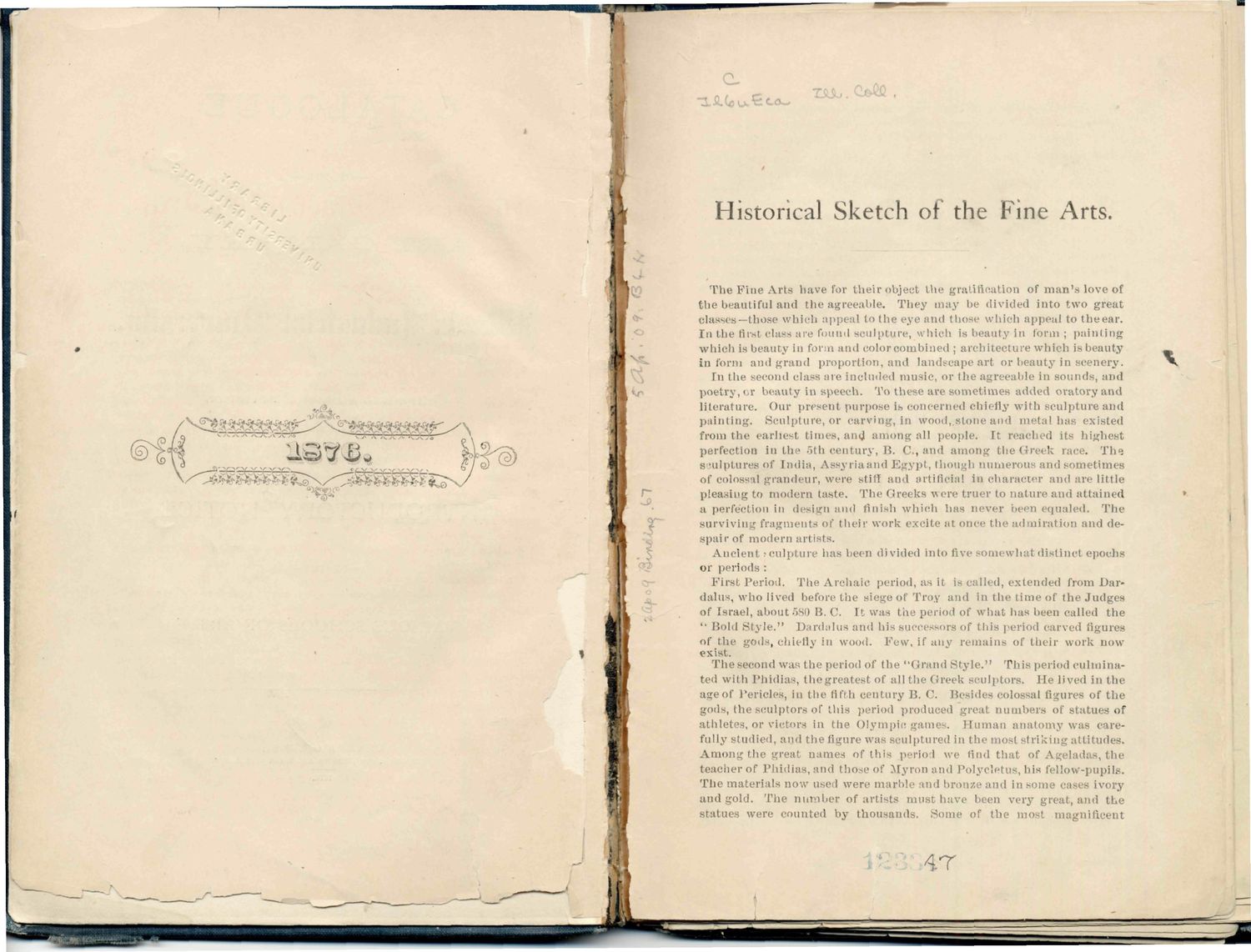| |
| |
Caption: Book - Gregory Art Collection Catalog (Gregory)
This is a reduced-resolution page image for fast online browsing.

EXTRACTED TEXT FROM PAGE:
i ^ € c * - ***>.**&> Historical Sketch of the Fine Arts. The Fine Arts have for their object the gratification of m a n ' s love of the beautiful and the agreeable. They may be divided into two great classes—those which appeal to (he eye and those which appeal to theear. In the first class are found sculpture, which is beauty in form ; painting which is beauty in form and color combined ; architecture which is beauty inform and grand proportion, and landscape art or beauty in scenery. Tn tlie second class are included music, or the agreeable in sounds, and poetry, or beauty in speech. To these are sometimes added oratory and literature. Our present purpose is concerned chiefly with sculpture and painting. Sculpture, or carving, in wood, stone and metal has existed from the earliest times, and among all people. It reached its highest perfection in tin' 5th century, B. C , and among the Greek race. Th>3 sculptures of India, Assyria and Egypt, though numerous and sometimes of colossal grandeur, were still and artificial in character and are little pleasing to modern taste. The Greeks were truer to nature and attained a perfection in design and finish which has never been equaled. The surviving fragments of their work excite at. once the admiration and despair of modern artists. Ancient sculpture lias been divided into five somewhat distinct epochs or periods : First Period. The Archaic period, as iI is called, extended from Dardalus, who lived before the siege of Troy and in the time of the Judges of Israel, about 580 B. ('. It was the period of what has been called the '• Bold Style." Dardalus and bis successors of this period carved figures of the gods, chiefly in wood. Few, if any remains of their work now exist. The second was the period of the "Grand Style." This period culminated with Phidias, thegreatest of all the Greek sculptors. He lived in the age of Pericles, in the fifth century B. C. Besides colossal figures of the gods, the sculptors of this period produced great, numbers of statues of athletes, or victors in the Olympic games. Human anatomy was carefully studied, and the figure was sculptured in the most striking attitudes. Among the great names of this period we find that of Ageladas, t h e teacher of Phidias, and those of Myron and Polycletus, his fellow-pupils. The materials now used were marble ami bronze and in some eases ivory and gold. The number of artists must have been very great, and the statues were counted by thousands. Some of the most magnificent < . . . . v . w . C*—! r- ————-.—CX „\ ;^s . 4T •BWWfr'i
| |